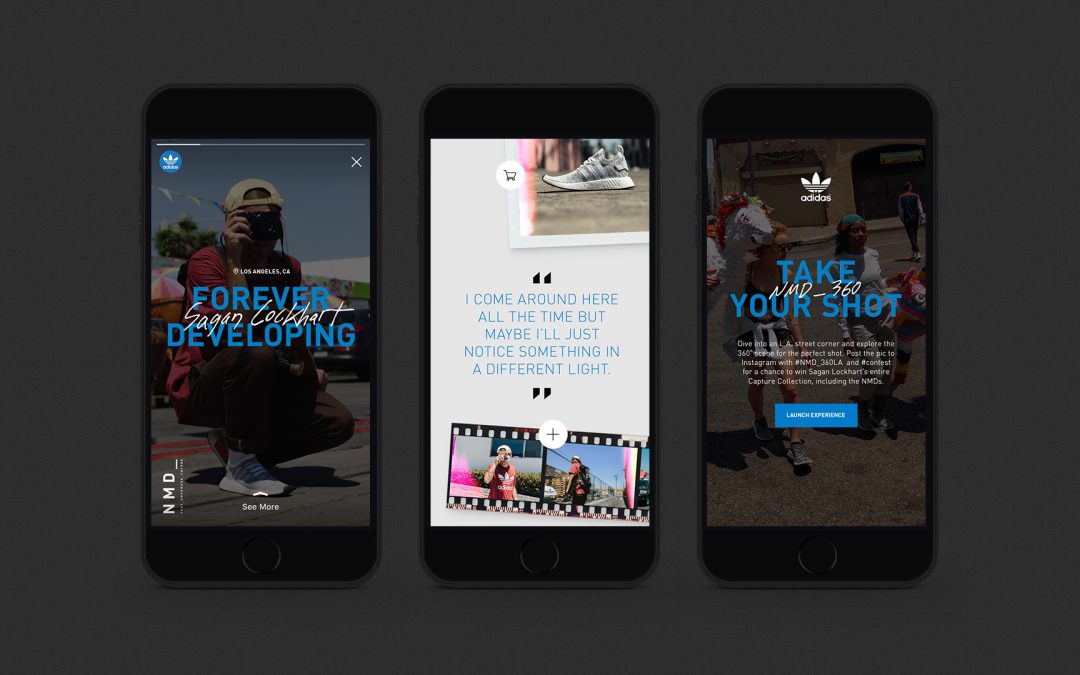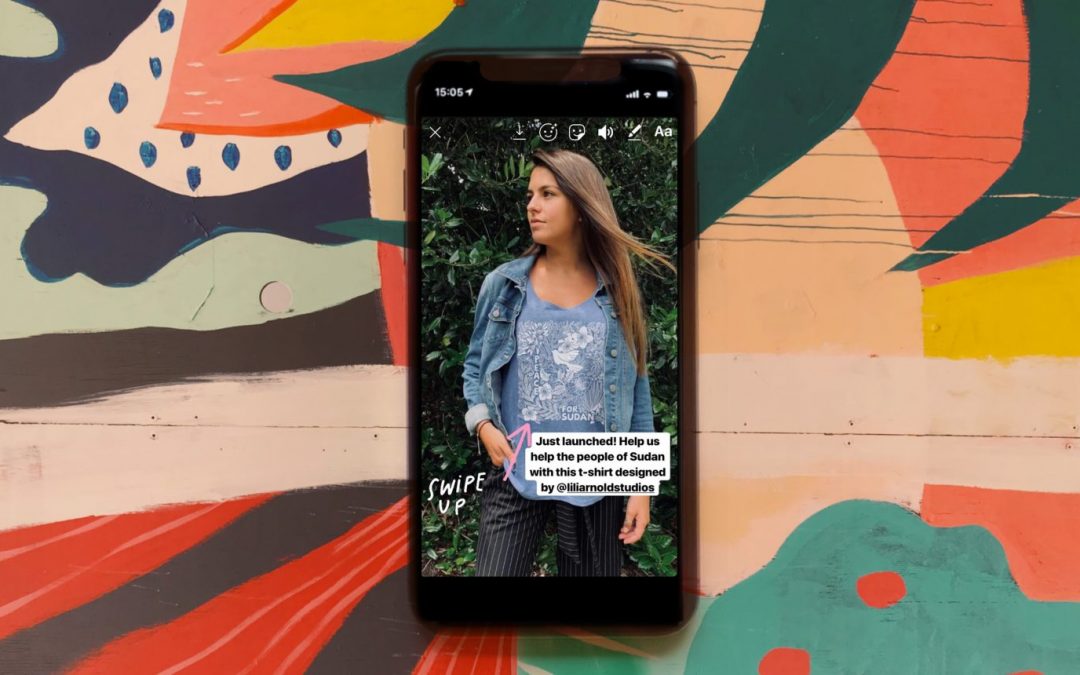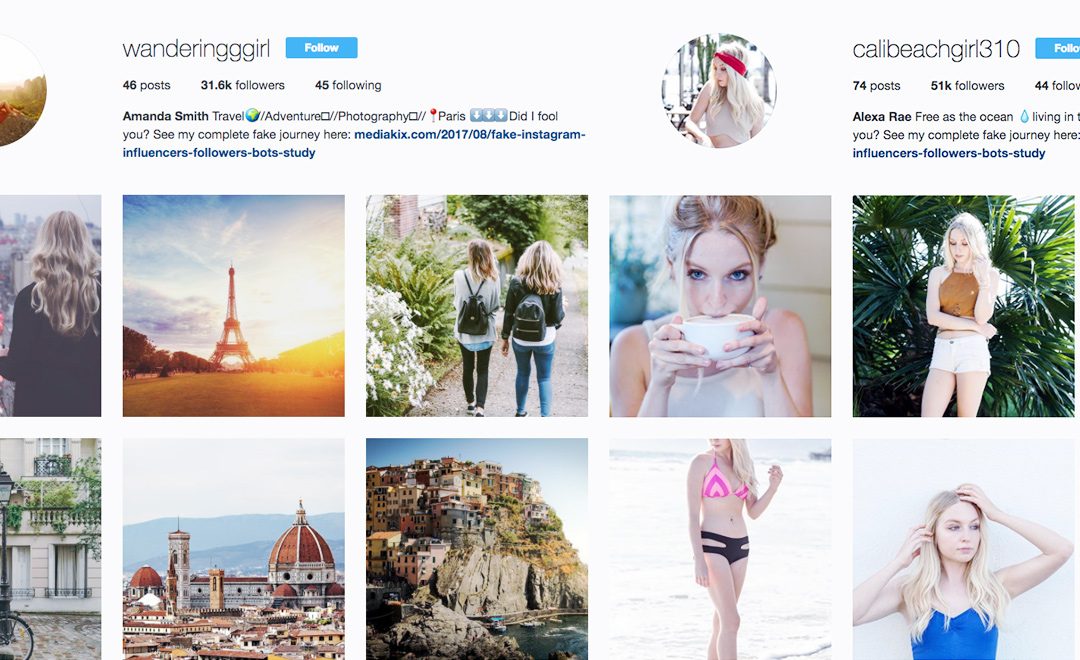
Dec 17, 2019
Instagram Stories are a grandiose way of boosting brand awareness and attracting new followers. The more interesting and unique your Stories are the higher your chances of success will be. And animated Instagram Stories appear just awesome. Such eye-catching content is on trend currently. Do you wonder how you can create them? By the way, you don’t have to own a professional camera or hurry a design team for creating animated Gram Stories. With your bright imagination and a proper application (there are multiple apps for creating Stories available), you will get your freshly animated Story within a few clicks. InstaBF, your unique means of raising Instagram and IGTV engagement, is ready to show you how you can create a fantastic Story animation. Flashy and eye-catching animated Stories are more likely to stop your followers to watch them. Fortunately, there are many applications available today that you can use. So, you can do that right from your smartphone. Just keep your excitement high and your eyes on this article.
Life Lapse for Stop-Motion Stories
Life Lapse is a wonderful application you can use to create top quality stop motion videos just from your gadget. Besides, it has easy tutorials that guide through the entire process. In fact, the application allows creating videos ten times faster with a simple smartphone than a pro editing software or an expensive camera can! Additionally, the application also comes packed with filters, a diversity of speeds, stock music. The interval timer, meanwhile, helps to get the right timing for your videos. It’s available for iOS devices completely free.
Enlight Pixaloop Will Bring Motion to Your Images
Pixaloop, developed by Lightricks, can easily bring an element of surprise to any static image by adding movement. Using it is so easy, but if you feel uncertain, here is a brief guide:
- Place arrows to designate the motion in the photo;
- In order to eliminate the speed in the animated area, add anchors.
You see, there’s absolutely nothing difficult in using the application. It just requires some practice. Pixaloop is available on iOS devices.
StoryBoost for Seamless Gram Stories
If you have a stock of images or footage and want to transform them into videos, StoryBoost is the application you need. It comes packed with a myriad of story page templates, as well as custom transitions that make sharing multiple short videos seamlessly. So, tapping forward, your followers will view a single and connected story. The application also has GIFs, stickers, and fonts that make image customization an easy thing. It’s available for iOS smartphones.
Adobe Spark for Creating Animated Graphics
If you plan to create animated graphics without having any design experience, Adobe Spark can be handy. The app is packed with multiple stock images free of charge, filters, and fonts. Adobe Spark will help you add a touch of animation to a photo or even a text. It’s completely free and easy to use on both iOS and Android devices.

Dec 16, 2019
Having talked about the power of the Instagram Stories campaign, InstaBF also started a free guide to planning out your first Stories campaign. Ready to go on?
Figure Out Your Strategy and Creative
Deciding on the creative direction you will have a Story campaign totally different from your ordinary stories content. And if you feel uncertain about the strategy and creative direction, we offer to your attention four basic elements to pay close attention to.
-
Define Your Campaign’s Concept
Whatever concept lies in the basis of your Insta Stories campaign, it must be closely tied to the campaign goals. For instance, if you aim at promoting a new product line, the concept must be driving sales and the creatives to use should include product stickers, clicks on the link in the bio, swipe-ups to your brand’s website, and so forth.
-
Designate the Visual Style of Your Stories Campaign
Just as it’s important to have a brand voice, building a Stories banding kit is a must. It includes inspirational imagery, a static color palette, a design style guide, fonts, defined filters.
-
Draft the campaign message and editorial style of your campaign
Having schemed a campaign message you will feel sure about introducing, explaining and even selling your product as long as the campaign is consistent. Hence, draft a couple of words that you’re going to weave during every campaign asset.
-
Distinguish with the Stories features
It’s definitely a good idea to establish particularly what features of Stories you’re going to use in promoting the campaign. In case it’s built around a giveaway, which is time-sensitive, a countdown sticker will create interest around it the best.
And don’t neglect Spark AR effects! You can always create and promote AR effects related to your own brand to drive more traction.
Get a Storyboard for the campaign
A storyboard is a visual representation of your campaign that will help you foresee how it will unfold right from the beginning. It will help you determine how to convey your message most effectively.
Create the Assets
Now it’s time to get down with your Stories Campaign Assets, i.e. the content you’ll post including images, videos, GIFs, graphics, etc. Depending on the scope of the campaign, the assets will drastically differ. For instance, in case if you plan to promote a giveaway or a contest, lifestyle shots, illustration, UGC might work well as assets.
Schedule the Campaign
Now just combine all the components and create your Instagram content calendar. It’s not necessary to have the official launch day of a product/event identical to the timeline of Instagram. Besides, think about the lifespan of the content you’ll share and the frequency.
Promote the Campaign
The basic goal of any Instagram Stories campaign is to reach as many people as possible. For its promotion, draft a strategy. Create hype around it with a countdown sticker, partner with compatible influencers to build excitement, create a campaign hashtag, etc.
Go Live on Instagram on the Campaign Launch Day
Besides getting ready to answer questions, monitor the excitement and engage with your community on the launch day of the Stories campaign, there are several other points to perform. Here are they:
- Update your bio;
- Be quick with DM responses;
- Reshare the content your followers share;
- Go live for Q&A.
How successful the Stories campaign was, can be determined through Instagram metrics. Track your brand awareness KPIs (engagement rate, impressions, signups, e-commerce purchases, etc.).

Dec 15, 2019
In the beginning, brands weren’t sure about how Instagram Stories could help in promoting their campaigns. However, those days are long gone and today Stories are a major help for any Instagram business and perhaps every brand has found a way or several to exploit the feature to their benefit. If you feel enthusiastic about all this, InstaBF, your faithful guide in the world of Instagram and IGTV, will gift you with top tips concerning how to plan an Insta Stories campaign. Let’s get to work right now!
An Instagram Stories Campaign: What Is It?
Just like an ordinary Instagram marketing campaign, a Stories campaign aims at achieving a certain marketing objective by means of posting Instagram Stories. That objective can be as broad as building brand awareness, or as specific as generating sales for the new product release. Regardless of it, the key to running it successfully is creating top-quality and interactive content that inspires viewers to comment and share.
How to Plan a Stories Campaign
So, now when you fully acquire the importance of a Stories campaign, let’s see how you can plan it efficiently step by step:
Pick the Goal
The first step of your Stories marketing campaign should be defining the goals since the latter determines what type of campaign you need to run and what metrics will be required to track it. So, spend enough time picturing what you are going to achieve when it comes to an end. After this, think about KPIs (Key Performance Indicators). Whatever your goal is, it must be tied to numbers. For instance, if you aim at promoting a new product, think about how many units you want to sell. Actually, the more your Stories campaign is tied back to measurable results, the more palpable they will be.
Additionally, don’t forget about the metrics. How many likes, comments, shares, and views you gather still matters a lot.
Aim at the Target Audience
Once you have your goals set, it comes to determining the target audience. Depending on the purpose of your campaign pursues, your audience can include only the narrow subset of your current followers or it can be a broad one with Insta users who are not your followers, yet. To get on track easily, base on the following points:
- What type of content your ideal audience should engage with;
- Whether they prefer photo or video-based stories;
- What stickers they give preference the most;
- In what communities they take part;
- What hashtags they mostly follow.
Only after completely nailing down your Instagram Stories campaign goals and target audience, you can courageously pass to scheming the rest of the campaign.
Set the Timeline
The goals your Stories campaign has, influences its timeline, too. For instance, if the campaign is tied to a real-life event (an in-store sale, a master-class, etc.), the timeline of the Story completely depends on the event and usually stretches to a week at most. If the campaign is tied to a larger event (a Pride Month, for instance), you can set a longer timeline. Just be cautious not to let it go for too long or you run a risk of losing the steam.
Here are the parts to be based when setting the timeline:
- Pre-campaign hype (teasing it before the launch);
- The launch day (the day you post the main campaign content);
- Post-campaign follow up (continuing the conversations once the initial excitement has fallen by UGC, customer reviews, and so forth).

Dec 14, 2019
Instagram has a huge influencer market size – around $2 billion! Brands have started heavily investing in it since it was set to reach to Generation Z or millennial audiences. Appearing too attractive not only for brands but for ordinary users as well, the Instagram influencer market is supplemented actively. The job of an Influencer is the dream job for so many young people around the world, that to appear in the view of brands, they determine to cheat over both the social network and businesses by buying fake followers and engagement. This artificially inflates their clout. Generally, all influencers are constantly suspected of buying fake engagement. However, this is typical mostly to small or micro-influencers. But don’t brands differentiate users with real following from those who use bots? Can anyone become an Instagram influencer overnight? We are going to find answers to these questions right away, in the blog of InstaBF – an Instagram and IGTV provider you can apply to whenever you need!
The Experiment Set
To find out whether it’s possible to secure brand sponsorship deals for accounts with fake following or not, Mediakix set an experiment. The service created two fictitious accounts with completely fake following. They also bought engagement (comments, likes) for the accounts before applying them to campaigns on the influencer marketing platform. The first account was for a fake fashion Insta model while the second one “belonged” to an adventure and travel photographer. Here are the steps that Mediakix undertook:
Generating Content
For the fashion model account, the service hired a local model and had a one-day photoshoot to fill the account with lovely images of a pretty girl. For the content of the second account, meanwhile, Mediakix used stock images. Those were mostly landscape images from popular travel destinations including Maui, Paris, and Yosemite. Additionally, as the account was titled “wanderingggirl”, they also added images of a blond girl from behind (again from stock images).
Buying Fake Followers
Once the accounts were set and posts were made regularly, they started buying 1k followers per day. Companies selling Instagram followers and engagement demanded from $3 to $8 peer 1k followers. For the first account of a model they bought 30k followers, while the second one was filled with 50k followers.
Buying Fake Engagement
After collecting the necessary number of followers for each account, the service ordered likes and comments (from 500 to 2,5k likes and from 10 to 50 comments per each photo). Generally, the prices for 1k likes range from $4 to $9 while a comments costs 12 cents on average.
Heading to Influencer Marketing Platforms
There are various influencer marketing platforms most of which require at least 10k following for signing up. After hitting the threshold, Mediakix registered its two fake influencer accounts and started applying for new campaigns every day. As a result, the fashion account secured two deals – one with a national food & beverage company and the other with a swimsuit company. The next account, in the meantime, secured a deal with the same food & beverage brand and one with an alcohol brand. Both fake influencers were offered free products and monetary compensation.
So you see that even brands are often mislead and can’t say which influencer is true and which is fake. This is, definitely, a huge problem for the entire industry.

Dec 13, 2019
Suppose you are a social media marketer in a meeting when your boss asks you how to market to Generation Z. What will you answer? Do you know what the Generation Z likes, how they talk, what matters to them, at last? Do you generally have an image who this generation includes? The huge generation of 2.1 billion individuals born between 1995 and 2010 has a huge spending power (more than $143 billion in the States alone). And not to target them when scheming your Instagram marketing campaign will be a huge mistake. So, InstaBF, a remarkable Instagram and IGTV provider, will explain everything you need to know about Generation Z so that you can prepare your business for the future.
Generation Z and Individual Expression
The phrase “be yourself” has never been as widely and deeply acquired as with Generation Z. This youth doesn’t depend on trends. Instead, they are after more personalized products. They are ready to overpay just to get the product that best highlights their individuality (over 58% of the surveyed). And what’s more interesting is that they want brands to align with their values.
Generation Z Are Protective of Their Privacy
It’s a dilemma but Generation Z is both hyper-personal on Instagram and keen to protect their privacy at the same time. Those who use laptops are mostly inclined to covering the webcams. So, you, as an Instagram marketer, should try to connect with Gen Zers on their own conditions or they might be too invasive. According to the survey, 61% of them would feel convenient sharing personal information only with those brands they trust completely under the condition the data won’t be shared with the third parties.
Gen Zers Prefer Mobile
People falling under the category of Generation Z are reported to give their preference to mobile devices over laptops and PCs. They use smartphones not only for watching videos, chatting or strolling on Instagram but also for making purchases. Accordingly, it makes sense to orientate on the youth when making Instagram ads. Around 85% of Gen Zers learn about new products on social media with Instagram in particular. And they connect with brands more frequently than others. When the matter concerns Instagram influencers, female Zens are more inclined to following and imitating them.
Making Purchases Online
Older consumers still hesitate whether to buy the product they need online or go to a brick and mortar store for it. They don’t seem to be comfortable sharing a credit card or any financial information online. Generation Z people, in the meantime, prefer online shopping. According to the latest surveys (carried out by Global Web Index), roughly 72% of the youth have bought at least one product online during the past month. And the greatest part of them made it through a mobile gadget. Most purchases are made in fashion and technology products.
Gen Zers are mostly happy to see branded content on their Instagram feeds. The surveys show 4 in 10 Zers follow their beloved brands on Instagram while at least one of them buys goods online.
So, when planning out your Instagram marketing campaign, target those people who may find value in what you offer.

Dec 12, 2019
In one of our previous posts, we started such a useful topic for startups and small business owners as to how to start an Instagram ad campaign for the first time. We introduced the first step and everything concerning the preparation. And now it’s high time to see how a simple ad campaign can work efficiently by the example of Jenny McCoy. This is how she started.
McCoy’s simple strategy started with two campaign goals – site traffic & load generation, and conversions. She assigned a 60-40 split ratio of the budget between the two objectives. She started the campaign with qualified audiences including site visitors and subscribers while also using lookalike audiences in order to get to the site traffic. The expert tested only two options in terms of the creative. Such an ad campaign is a wonderful starting point for most startups and small businesses.
#3: Instagram Ads Make a Full-Funnel Impact
Social media ad specialist Jenny McCoy finalizes everything by the statement that Instagram ads (and social media ads in general, too) are capable of making a full-funnel impact. However, social media shouldn’t be acquired as an all-mighty platform. And if you can’t detect any impact on your sales after having run an Instagram ad campaign, look for other impacts. Social media ads can make it really valuable and at the same time easy to amplify impacts.
Nevertheless, it’s also recommended to look far beyond metrics related to Instagram such as likes, follows and post engagement, and reach to site visits, email leads, etc. so that to find the best way an Instagram ad can work for improving your business.
How Much an Instagram Ad Costs
Now, when you have a clear image of how to start an Instagram ad campaign for your new small business, most probably you’d like to find out how that will cost you. Generally, different ads have different prices. Yet, there are average costs set you can orientate on. For instance, the cost-per-click price for an ad on Gram is about $0.70 – $0.80 on average based on the analyses of around $300 million of ad spend. This price can appear higher or lower depending on a number of aspects including the ad placement, the age of the target audience, and the time of the year. Ads are always the cheapest at the beginning of the year and the most expensive in the last quarter.
Types of Ads
Instagram has become a fertile platform for all businesses whether small or mega-popular giant ones. Here you can choose various types of ads to promote your business including Stories ads, photo, video, carousel, and collection ads. No matter which ad format you choose as a creative to include in your ad campaign, it will be woven into your users’ Stories and Feeds so a non-disruptive user experience can be expected. Don’t forget to include an appropriate call-to-action to collect more leads. Here are a few examples of CTAs to use:
- Apply Now;
- Book Now;
- Get Directions;
- Get Showtimes;
- Contact Us;
- Learn More, etc.






